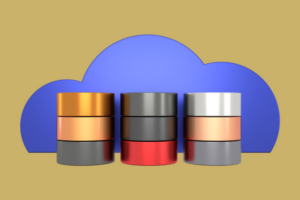Prescriptive analytics is a relatively new area of analytics that is designed to help organizations improve their performance by providing decision support and recommendations for action. In other words, prescriptive analytics goes beyond descriptive and predictive analytics by telling you what to do to improve your business.
Why Is Prescriptive Analysis So Important? Because in today’s competitive business landscape, organizations need to be able to make quick and informed decisions in order to stay ahead of the curve. Prescriptive analytics can provide the information and recommendations that companies need to do this.
There are many different applications for prescriptive analytics, but some of the most common include route optimization, price optimization, and inventory management. Prescriptive analytics can also be used to improve customer service, marketing campaigns, and much more.
If you are looking to gain a competitive advantage in today’s business world, then prescriptive analysis is something you need to pay attention to. This is only going to become more important in the coming years so it’s time to get on board.
Prescriptive Analysis – What Is It and Why Is It Important?
Prescriptive analysis is the process of using data to determine an optimal course of action. Taking into account all relevant factors, this type of analysis produces recommendations for next steps. For this reason, prescriptive analytics is a valuable tool for data-driven decision-making.
There are many reasons why companies should use prescriptive analytics. Perhaps most importantly, prescriptive analytics can help organizations overcome the limitations of descriptive, diagnostic, and predictive analytics. Descriptive analysis provides a snapshot of what happened in the past; diagnostic analysis allows you to understand why things happened; predictive analytics uses past data to predict future outcomes. Prescriptive analysis goes beyond these three methods by integrating option analysis and recommending the best course of action based on all available information. This makes it a valuable tool for decision-makers who want to make data-driven decisions that take into account all relevant factors.
In addition to its usefulness in decision-making, prescriptive analytics can also help companies automate processes and improve efficiency. By providing recommendations on what to do, prescriptive analytics can help companies streamline their operations and get the most out of their data.
Prescriptive analytics is already being used by leading organizations in a variety of industries. For example, prescriptive analytics is used to improve patient care in healthcare systems, optimize supply chains, and reduce crime. As the world becomes increasingly data-driven, it is likely that prescriptive analytics will become even more important to have a successful business.
When we talk about prescriptive analytics, we’re usually talking about artificial intelligence (AI). AI is very important in this process because it is able to identify patterns that humans would not be able to see. AI algorithms are also able to constantly learn and improve over time, which means they can become more accurate in their recommendations. Although there are several types of AI applications, the one that is most related to prescriptive analytics is a recommendation system or recommendation engine which is a type of data filtering tool that uses machine learning algorithms to recommend actions to achieve a specific goal.
There are many types of recommendation systems, but the most common are content-based recommendation systems and collaborative filtering recommendation systems. Content-based recommendation systems use information about items that users have liked in the past to recommend similar items to them in the future. This is done by creating a profile for each user who accumulates his tastes. Collaborative filtering recommendation systems, on the other hand, make recommendations based on similarity between users. This means that if two users have liked similar items in the past, they are more likely to like similar items in the future. These recommendation systems are often used to suggest items such as movies, music, and products.
Although recommendation systems are commonly used to recommend articles to individual users, they can also be used to make recommendations on user groups. For example, a recommendation system could be used to determine which products are most popular with a certain age group. This information could then be used to make targeted marketing campaigns.
In conclusion, prescriptive analytics is a powerful tool that can be used to make data-driven decisions and improve business efficiency. By integrating option analysis and by suggesting the best plan of action based on all available information, recommendation systems are able to identify models that humans would not be able to see and make recommendations on how the business can be improved.
The Different Applications of Prescriptive Analysis
Prescriptive analytics can be used in a variety of ways to improve business outcomes. Some of the most common applications include:
1. Decision Making: As mentioned earlier, prescriptive analytics is a valuable tool for data-driven decision-making. By integrating all relevant factors into its analysis, prescriptive analysis can provide recommendations for the best course of action. This can be especially useful in complex situations where making the wrong decision could have serious consequences.
2. Process Automation: It can also be used to automate processes and improve efficiency. By providing recommendations on what to do, prescriptive analytics can help companies streamline their operations and get the most out of their data.
3. Optimization: It can be used to optimize supply chains, operations, and other business processes. By finding the optimal solution to a problem, prescriptive analytics can help companies save time and resources.
4. Predictive Maintenance: Prescriptive analytics can be used to predict when equipment is likely to fail and recommend preventive maintenance measures that can be taken to avoid downtime. This can help companies reduce the cost of repairs and improve equipment availability.
5. Customer Segmentation: Prescriptive analytics can be used to segment customers based on their likelihood of churn, lifetime value, or other factors. This information can be used to target marketing efforts and improve customer loyalty.
6. Fraud Detection: It can be used to detect frauds by identifying unusual patterns in the data. This information can be used to investigate potential fraud and take steps to prevent them.
7. Risk Management: It can be used to identify and assess risks, as well as to recommend actions that can be taken to mitigate them. This can help companies avoid or minimize the impact of potential problems.
8. Market Analysis: Prescriptive analysis can be used to analyze market trends and recommend measures that can be taken to capitalize on opportunities or avoid potential threats. This information can help companies make better decisions about product development, pricing, and marketing.
9. Traffic Management: Prescriptive analytics can be used to manage traffic flows and recommend actions that can be taken to reduce congestion. This information can help companies improve transportation efficiency and reduce the environmental impact of their operations.
Prescriptive analysis is not limited to these applications; it can be used in any situation where making better decisions would lead to better results. As data becomes more important in business, prescriptive analytics is likely to become even more ubiquitous.
Key Considerations When Implementing Prescriptive Analytics
When implementing prescriptive analytics, there are a few key considerations to keep in mind. Some of the most important include:
1. Data quality: Normative analysis relies on accurate and timely data to produce useful recommendations. It is important to ensure that the data used is of high quality and that it is representative of the current situation.
2. Algorithms: The algorithms used by prescriptive analysis engines are essential to their effectiveness. It is important to select the right algorithm for the task at hand and make sure it is configured correctly.
3. Computing resources: Prescriptive analytics engines can be computationally expensive, especially when running in real time. It is important to ensure that the necessary IT resources are available to support them.
4. Human input: Drivers often require human input to assist with data interpretation and decision-making. It is important to have the appropriate staff available to provide this feedback and help guide the analysis.
5. Training: Motors require training data to learn how to produce recommendations. It is important to provide the engine with enough data so that it can learn how to accurately predict outcomes.
6. Implementation: Prescriptive analytics engines can be difficult to implement and require careful planning. It is important to have a clear understanding of the objectives of the implementation and the resources that will be required.
7. Maintenance: Prescriptive scan engines require regular maintenance to ensure proper operation. It is important to have a plan in place for regular system updates and troubleshooting.
Prescriptive analytics can be a powerful tool for data-driven decision-making, but it’s important to keep these considerations in mind when implementing it. By doing so, companies can ensure that they get the most out of their investment in prescriptive analytics.
The Future of Prescriptive Analytics
Prescriptive analytics is a rapidly growing field and its potential applications are endless. In the future, we can expect prescriptive analytics to be used in more and more situations where better decisions would lead to better outcomes.
Here are some examples of areas where prescriptive analytics could be used:
– Healthcare: Prescriptive analysis could be used to make recommendations on the treatments most likely to be effective for a particular patient, based on that patient’s individual characteristics and medical history.
– Education: Prescriptive analysis could be used to recommend the best educational path for a student, based on that student’s strengths, interests, and learning style.
– Business: Prescriptive analytics could be used to make recommendations such as the marketing strategies most likely to be successful based on customer data.
As you can see, the potential applications of prescriptive analytics are vast. In the future, we can expect this type of data-driven decision-making to become more and more common. And if you’re wondering how you can make better decisions for your business, Sunny Experience can help you perform prescriptive analytics. This will help you make data-driven decisions, which is critical to succeeding in today’s market.
Thanks to our team and knowledge, we will optimize every step of your business to achieve the best results. You won’t have to wonder what to do next; Sunny Experience will tell you exactly what steps to take as a recommendation engine would.
Contact us here and speak to one of our prescriptive analytics experts!


